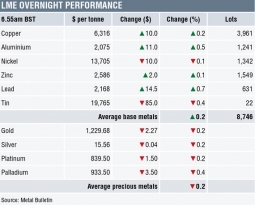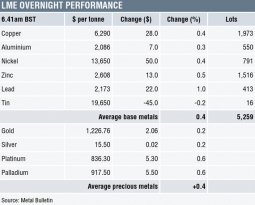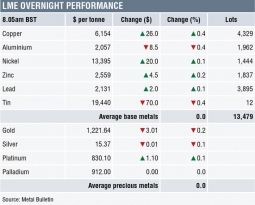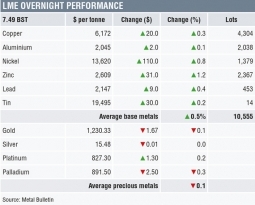The spot gold price rose during Asian trading hours on Friday as it stayed supported by post-Brexit global political and economic uncertainty.
Spot gold was last at $1,328.60-1,326 per ounce, up $5.75 from Thursday’s close. Trading ranged at $1,320.70-1,329.60 so far.
Gold has seen some slippage in recent days while the initial shock of the UK Brexit vote subsides. But while there are signs of a modest pick-up in risk appetite, there is little to signal a slowdown in safe-haven demand just yet, James Moore, research analyst at FastMarkets, said.
“Gold may have room to correct back to $1,280-1,300 in the short term while some look to crystallise recent gains. However, given the political and economic unknown created by Brexit, we see price risks skewed to the upside,” he said.
On Thursday, Bank of England (BOE) governor Mark Carney said that the bank could lower interest rates to stabilise the economy following the Brexit referendum in the UK.
“It now seems plausible that uncertainty could remain elevated for some time,” Carney said. “The economic outlook has deteriorated and some monetary policy easing will likely be needed over the summer.”
After falling by more than one percent on Thursday after the BOE press conference, the British pound recovered by 0.26 percent to 1.3347 against the dollar recently on Friday.
The US dollar is down 0.1 percent to 95.84 so far on Friday.
Meanwhile, the Caixiin Chinese manufacturing purchasing managers index (PMI) released on Friday continued to raise concerns about China’s weaker-than-expected economic recovery.
The Caixin Chinese manufacturing PMI for June read 48.6, which was below forecast of 49.1 and May’s number of 49.2. It was the index’s third monthly decline in a row and marked the steepest deterioration in manufacturing conditions since February. This was the 16th straight month where the index was below the neutral 50 value.
Chinese manufacturers reported the sharpest deterioration in operating conditions for four months in June, with output falling at the quickest rate since February amid a further drop in new work, said Caixin Insight Group.
“Overall, economic conditions in the second quarter were considerably weaker than in the first quarter, which means there had been no easing of the downward pressure on growth,” said Zhong Zhengsheng, director of macroeconomic analysts at Caixin.
“Against a backdrop of turbulent external environment, and in order to avert a sharp economic decline, the government must strengthen its proactive fiscal policy while continuing to follow prudent monetary policy,” he said.
Earlier in the day, China’s official manufacturing PMI for June came in at the borderline mark of 50, in line with expectations and down slightly from May’s reading of 50.1. The 50-point level separates expansion in activity from contraction.
The country’s non-manufacturing PMI for May was at 53.7, up from May’s figure of 53.7.
The official PMI is more focused on large state-owned firms, while the independently surveyed Caixin PMI is closely watched for conditions among the country’s private sector.
Chinese economic data saw a largely credit-fuelled bounce in the first quarter. The subsequent slowdown in most of China’s key economic data since April hinted of a slowdown in Beijing’s aggressive stimulus measures.
In US data released Thursday, US weekly jobless claims were much as expected at 268,000, while the Chicago PMI for June was 56.8, well above a forecast 50.6.
Key US data due later on Friday includes final manufacturing PMI, ISM manufacturing PMI, consutrction spending and ISM manufacturing prices.
In equities, the Shanghai Composite is up 0.19 percent to 2,935.11 so far on Friday.
In other precious metals, silver surged to a near two-year high of $19.008 on Friday –it was last at $18.965/19.015, up $0.245.
Silver remains the biggest performer in the past week as it rose more than five percent since the start of the week driven by month’s end switching and short-coverings, said Commerzbank on Thursday.
“We feel that silver has further upside in the near term because the fear factor could play out a little further. But considering the extreme bullishness in the market, a reversal could be around the corner – perhaps later this summer,” Boris Mikanikrezai, metals analyst at FastMarkets, said.
Platinum jumped $9 to $1,027/1,033, and palladium gained $4 to $596/604 recently on Wednesday.
On the Shanghai Futures Exchange, gold for December delivery was unchanged at 286.30 yuan per gram and December silver was flat at 4,182 yuan per kilogram.
(Additional reporting by Dalton Barker)
The post Gold bouyed by world economic uncertainty; silver near 2-year high appeared first on The Bullion Desk.
Read More
Source: Bullion Desk News








